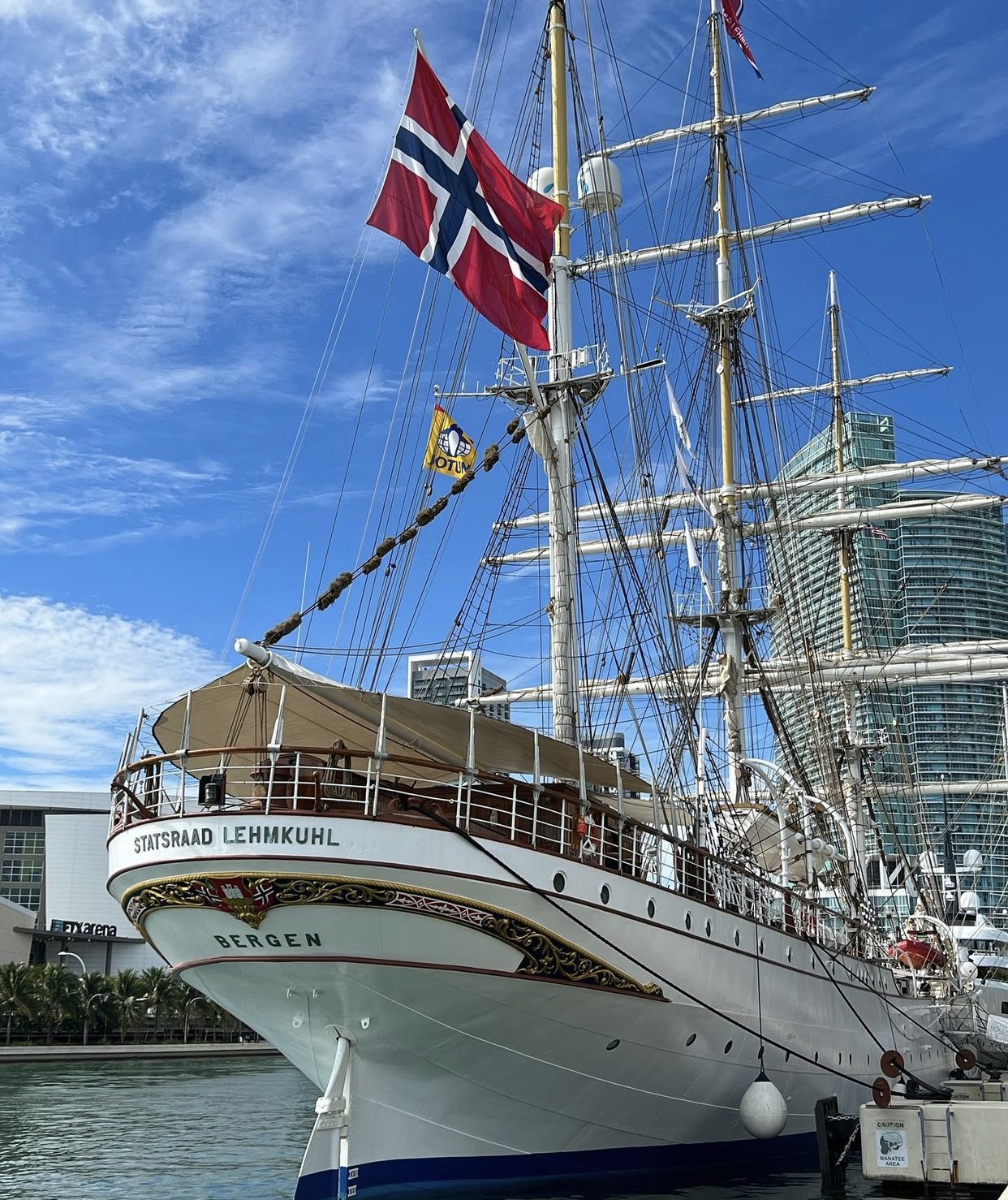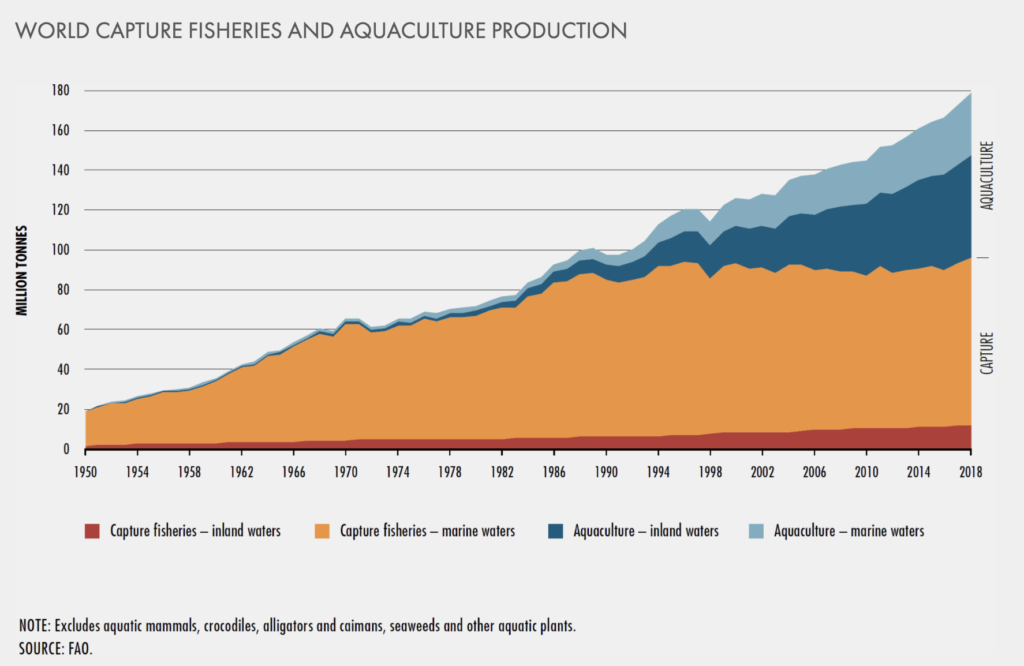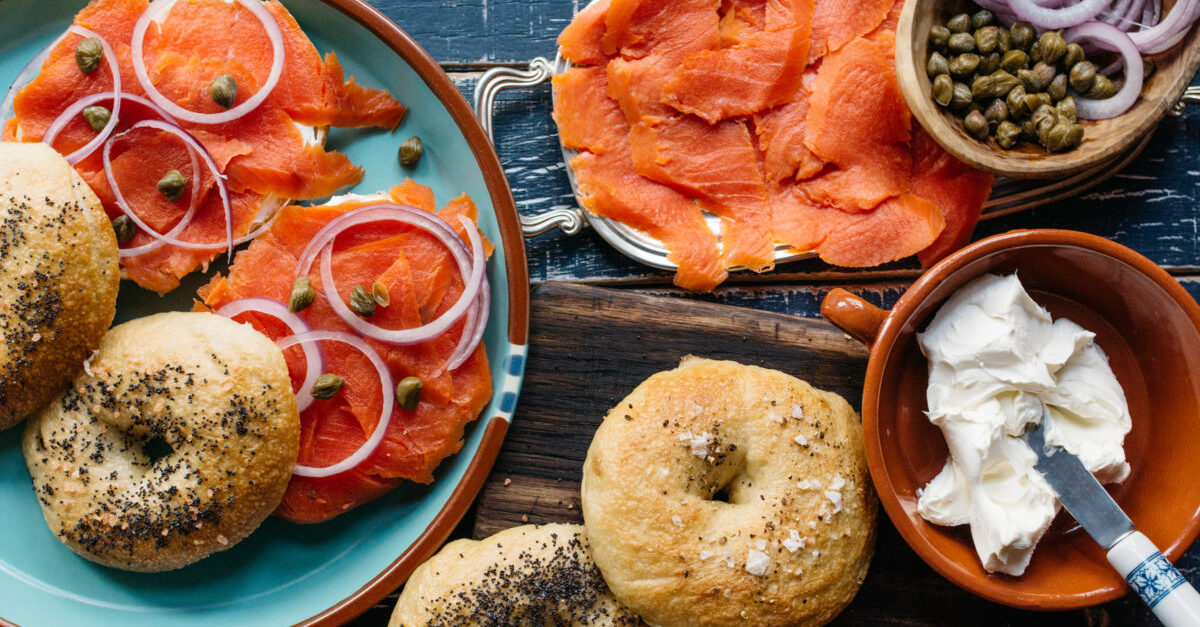
Aquaculture and the Future of Blue Foods
How can food from the ocean support sustainable development?
This was one of the questions that we were trying to address onboard the One Ocean Expedition, a 55,000 nautical mile voyage around the world on Norway’s oldest tallship.
The One Ocean Expedition brought together scientists, students, researchers, and industry leaders to try to solve some of the ocean’s biggest issues – including the role of blue foods.
Blue foods are defined as all edible aquatic organisms, including fish, shellfish and algae from the oceans and freshwater.
In order to increase the impacts of blue foods, we need to make them more widely available. This is why many of our conversations onboard the One Ocean Expedition were about how to sustainably ramp up aquaculture development.
Aquaculture refers to the farming of fish. Mariculture refers specifically to the farming of fish in seawater. (Whereas the term ‘aquaculture’ can be referring to the farming of fish in sweater or freshwater).
Today, over half of the seafood that we eat comes from aquaculture and that number is even higher for some species like salmon, where 70% of salmon intake comes from aquaculture.

So it was only natural that we worked alongside Mowi, the world’s largest producer of farmed salmon to identify some of the key ways to unlock the potential of blue foods to support sustainable development.
Over the course of ten days, I sailed from Cuba to the Bahamas to Florida, with some of the brightest minds involved in blue foods and aquaculture. And together, we came up with some pretty great ideas about blue foods from sustainable aquaculture that can contribute to sustainable development. Here are three of them.
Increasing mariculture development can address poverty and malnutrition around the world.
Blue foods are rich in essential micronutrients, such as omega-3s, zinc, iron and vitamins A, D, and B12. In comparison to other animal proteins, rank highest in terms of nutritional value. This makes them an incredibly powerful tool for public health in addressing nutrient deficiencies in certain parts of the world, as well as increasing access to healthy protein in areas with low levels of food security.
Increasing mariculture development can also make our food systems more sustainable.
Seafood has the lowest environmental footprint of all animal proteins on Earth. In fact, while we were at sea, Mowi was named the most sustainable protein producer in the world, beating out other companies who produce land-based proteins such as meat and dairy. Sustainable mariculture development can reduce emissions from global food systems and innovations in the space, such as methane-derived feed and re-capturing byproducts, can reduce footprints even further by creating a closed loop system.
Finally, sustainable mariculture development is key to advancing equitable livelihoods and culture.
Mariculture development creates jobs and economic opportunities, oftentimes in rural areas. This injection into the economy from mariculture can help to revitalize communities, bringing in infrastructure and educational opportunities for young people, while supporting coastal cultures and the importance of aquatic foods in traditional settings.
“If managed appropriately, aquatic foods have the potential to make a meaningful contribution to the nutritious, sustainable and just food systems of the future, particularly in some of the most food-insecure parts of the world.”
Expanding mariculture production to increase the availability of blue foods around the world is a triple win; it’s a win for people, it’s a win for the economy, and it’s a win for the planet.



